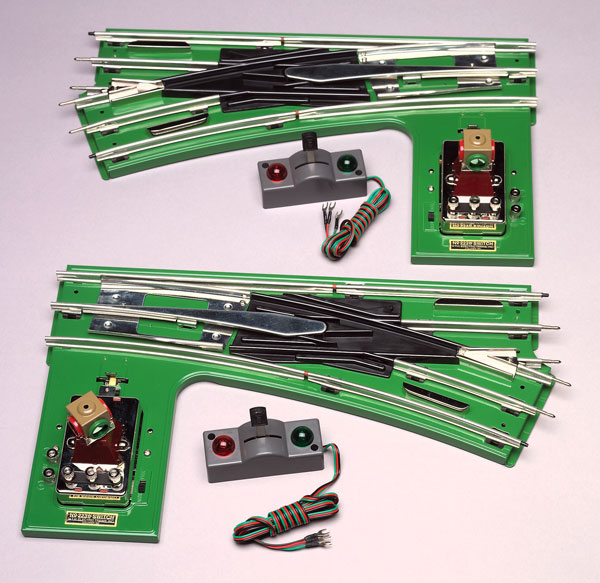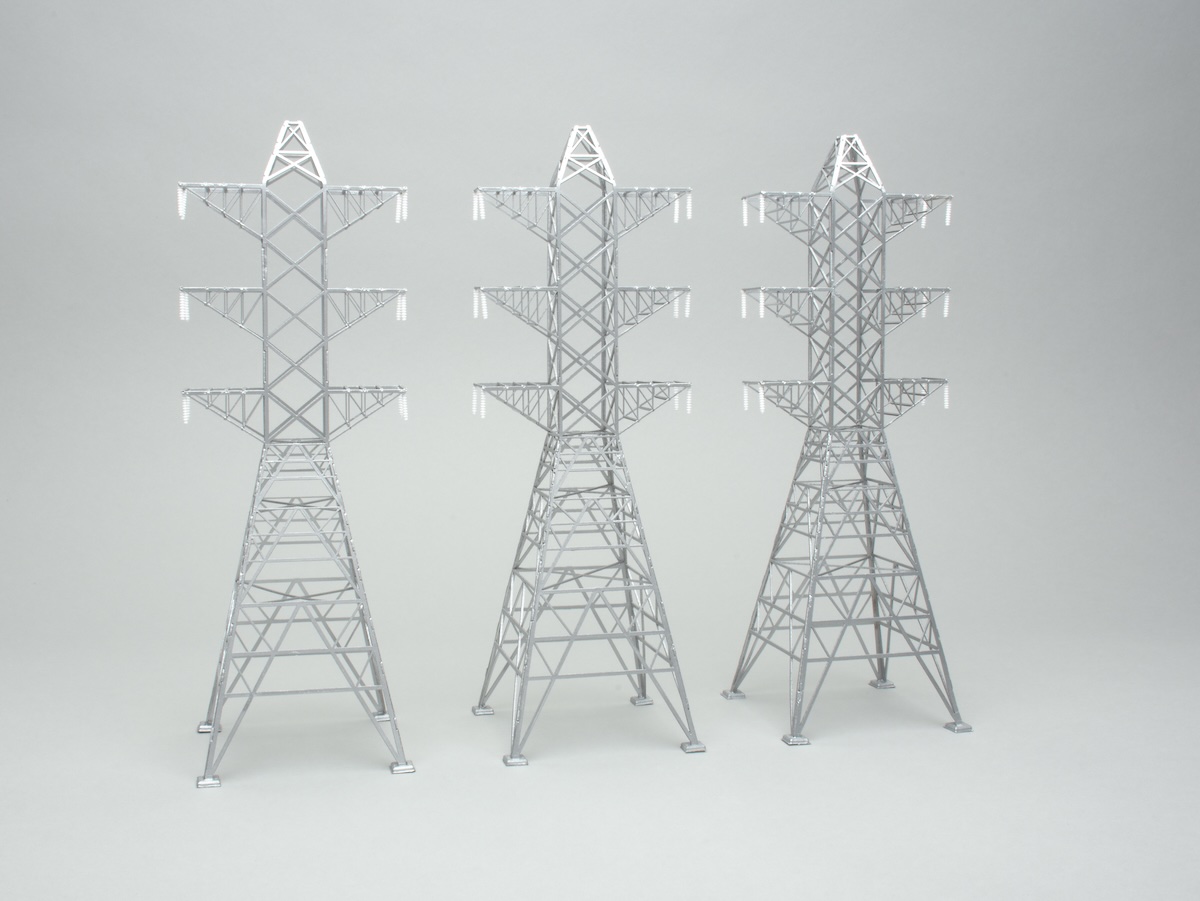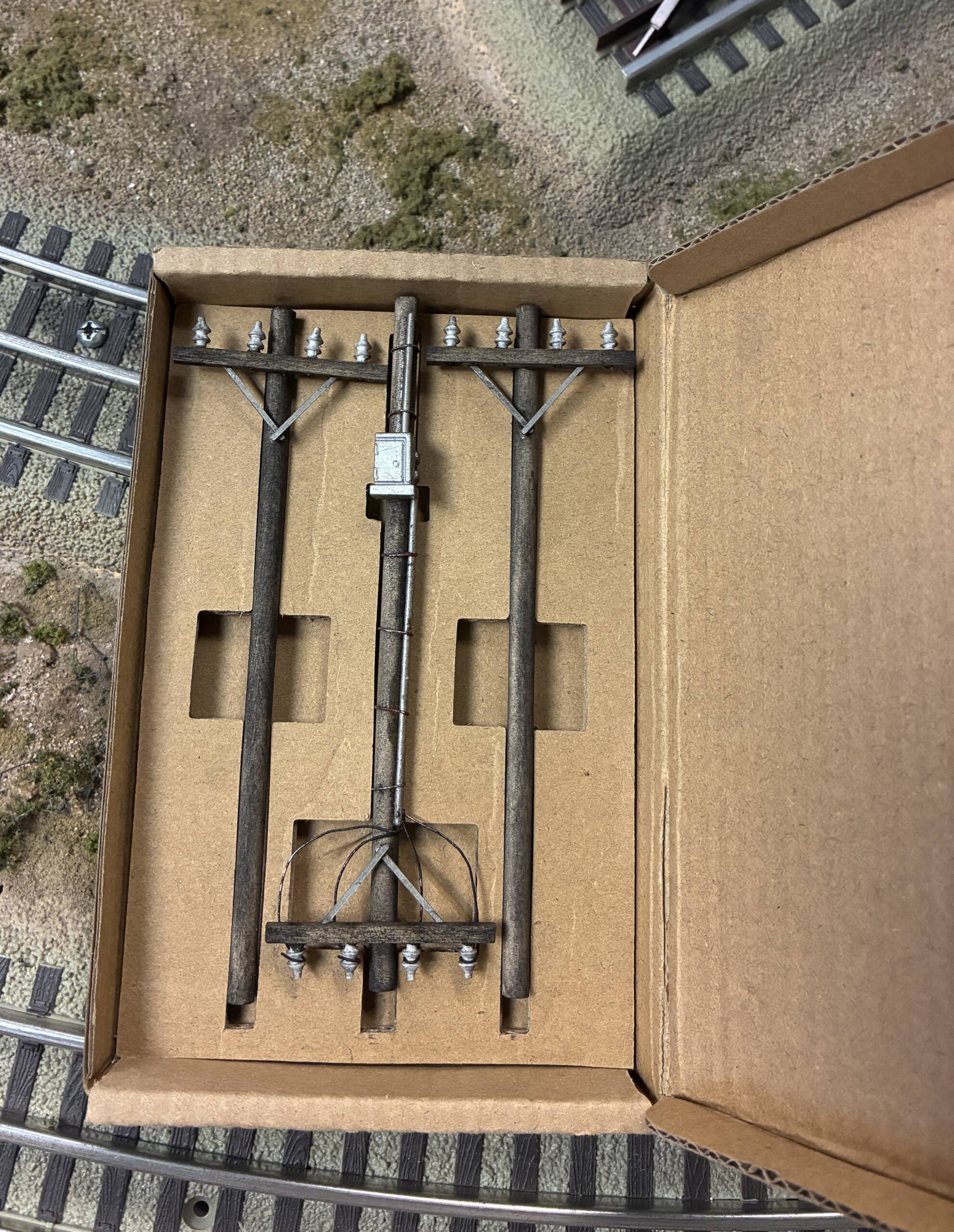For years, fans of Standard gauge trains had two choices: resuscitate old products made by Ives, American Flyer, or Lionel, or seek out the small cottage industries that make new switches.
The first approach involved restoring an old switch. This took time, and the effort expended did not always result in a switch that could be satisfactorily brought back to life. The second method can be a challenge because small manufacturers are sometimes elusive, and the prices can be rather high due to the low volume of production.
The new MTH switches change this situation entirely. The switches are made in two track diameters: 42 inches (the traditional Standard gauge size) and 72 inches.
The switches’ enameled steel bases are a gorgeous green that replicates the green of the Lionel no. 233 switch perfectly. The switch base supports a Lionel-style light that changes color when the switch is thrown. The outside rails have recesses for the switch points, so rolling stock does not “pick” the points and derail. Flange guards are situated on all four outside rails.
Black plastic is liberally used to avoid shorting out the locomotive and to avoid the dreaded “pick-up roller drop.” An MTH O gauge controller with lighted direction indicators and color-keyed wiring is included.
So the switches look good. But how do they operate? Very well! I ran both my Lionel nos. 8 and 10 locomotives through the MTH switches in both directions at varied speeds. The turnouts worked every time. What’s more, the locomotive headlights hardly flickered as they crossed the points and the frog.
I added some no. 330 passenger cars to the test, running them backward and forward and pulled and pushed. All the cars, including one that had given me trouble in the past, rolled right through without derailing.
The switches also feature a non-derailing function that, while standard in today’s track systems, was not always included on old ones. Another option is the use of constant-voltage power instead of track power to activate the switches. MTH suggests using 14 volts, and I found the switches worked fine even on track power.
There a clearance problem on diverging end of the O-72 switches that’s easily fixed. The first set of ties on the track attached to the straight and curved routes hit one another. In a recent MTH club newsletter, suggests slipping one of those ties back a half inch, and then both pieces of track can be fitted to the switch.
MTH has played a big role in reviving the use of Standard gauge trains through its Tinplate Traditions line. The addition of switches makes it possible for hobbyists to build more complex layouts and even conduct switching operations.















These switches are great, but early large gear locomotives sometimes ride on the guard rails or can derail at the points. A simple fix is a sand band on a motor tool to grind the clearance you need. Try rolling the loco through by hand and see where to grind or sand. I currently have 8 MTH standard 72″ switches and am happy with their performance, also easier than rebuilding my old 223 switches and separating the coil power from the track. Because I have a lot of rebuilt original 223’s I haven’t tried the 42″ radius switches yet but expect the same clearance problems. On a different subject be aware that some standard 72″ radius track from MTH has had the center rail over crimped and after a few hours of running trains over them short out – a pain to test the ;layout for the @#$% short, but old pre-war insulators solved my problem.